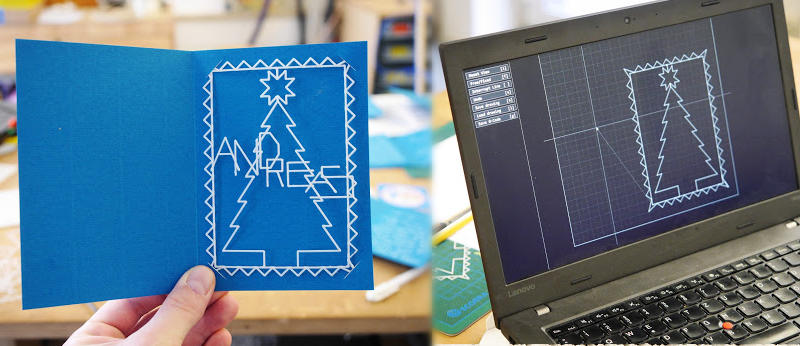T’is the season to hack, and the maker brigade won’t disappoint — there’s no better way to crank out a few cute holiday tchotchkes than to fire up the 3D printer. [Niklas Roy] has released gDraw, a software package that creates G-code to print out 2D drawings on your 3D printer.
The interface is simple, allowing the quick and easy creation of basic vector drawings. The program then converts the paths in the drawing to a G-code representation that your printer follows to squirt them out in plastic. Think of it as the 3D printed equivalent of the “Stroke Path” tool in Photoshop.
[Niklas] chose to demonstrate the software by creating some interesting greeting cards that Big Christmas is sure to rip off next year and sell for $30 a pop. The printed plastic drawings give a fun 3D effect to the cards, and we’d love to see more examples of art created with this technique. The software was designed to work with the Ultimaker 2, but with tweaks, it should be able to generate code for other printers, too.
We’ve seen plenty of great festive hacks over the years — like this awesome laser projection setup.
















Should be able to clip the paper to the printer bed then print and bond plastic directly to it.
This way, you can take out the line drawing and hang it in the window or on the christmas tree.
Well… printing directly on paper is difficult. I know this because I tried. When I started with 3D printing I thought I was smart ans used paper as an underground, I used tape to fix the paper to the bed. But after a few layers the paper will turn and twist and is no longer the perfect flat printing area you started with… causing all sorts of printing problems. It is (I guess) caused by the cooling of the plastic that shrinks and pull on the paper, but also (I guess) because the paper is forced to dry pretty fast and unequal (all paper contains moisture the amount of it is determined in how and where you store it), the drying process is induced by the high temperature of the plastic. So in short… keeping the paper flat if you want to use it as a printing bed is quite difficult.
The problem of paper is that heat deforms it and it’s not really a plane surface then. Been there, done that to replace adhesive :)
Inkscape will do this if you stick the Gcode plugin that I use for my laser cutter in it. It works fine with Marlin.
Perhaps there’s a plastic card stock that wouldn’t deform when doing this.
I hacked up some javascript that does a similar task of squirting out gcode from mouse clicks. Only 99 lines long. :p http://silvermag.net/tracer/
Usw conductive Filamente, add a battery and some LEDs, …